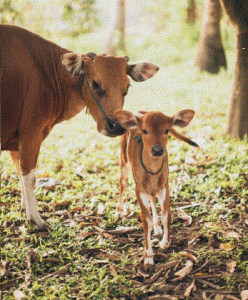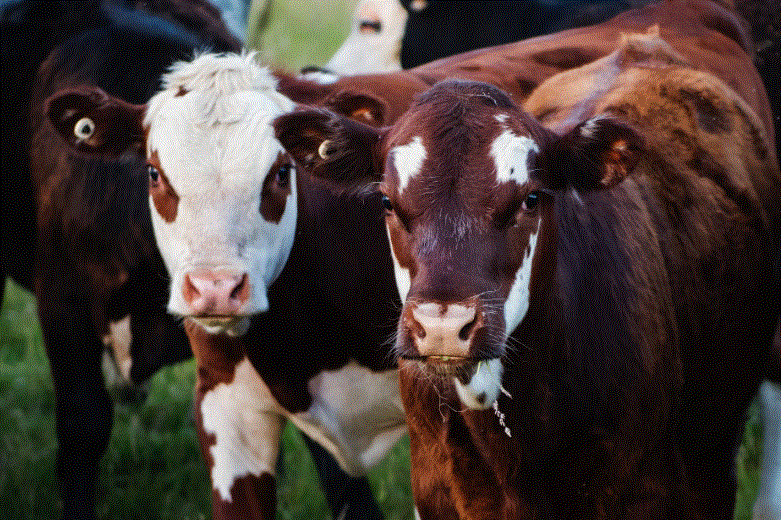Milk production has increased tremendously over the past decades. Between 1950 and 1975, dairy milk production in the U.S averaged at 120 billion pounds. Since then, dairy cow milk production has increased by over 75 %. The production levels in 2013 were a record high of 201.2 billion pounds. This is immense growth especially at a time when milk cow numbers remained relatively constant.
A dairy cow’s profitability is measured but its milk production. A cow will only be economically viable if the dairy cow milk production breaks even. Increasing dairy cows’ milk production may sound like age-old metaphors that may not make much sense to most farmers. There are however proven ways of ensuring that you are harvesting optimal milk from your cows.
Increasing dairy cow milk production is a process and needs to be handled professionally. Talking of professionalism, you need to think beyond the fixed resources. This way, you will be increasing your production without necessarily increasing costs of production. The secret here is improving cows living conditions and management practices.
Keeping an eye on details is very important in increasing the overall cow production. Here are some of the factors that you need to consider.
Water For Increased Milk Production
- Adhere to continuous supply of clean water
- Provide clean and sufficient water spaces. 1 water fountain should serve a maximum of 20 cows. This translates to 2 inches of linear space per cow.
- Water troughs should be cleaned at least once per week.
Appropriate And Sufficient Feeds
- Do not leave feeding bunks empty

- Ensure cows are feeding on a balanced diet
- Remove old feeds every day
- Provide enough feeding slots. Every cow should have a minimum of 2 feet feeding space
- Rotate cow feeds and supplement as necessary
- Spoiled silage shouldn’t be fed on dairy cows. Scrap off the feeds and dispose
Feed costs account for 40-60% of milk production costs. These costs are incurred in the purchase of forage, feeds and feed additives. Dairy farmers have minimal control over the prices and thus the costs. However, efficient feeding can go a long way in giving the farmer control over the costs.
Several concepts on dairy feed management have been developed. Some include;
- Developing feeding usage plans
- Communication with nutritionists
- Monitoring and evaluation of commodity usage
- Use of TRM mixers
These may sound like simple concepts but they have literally made the difference between profitable and non-profitable dairy farms. Check out Dairy Feed Management for more tips and guidelines on how to improve your dairy feed management and boost your profit margins.
How Cows Comfort Affects Dairy Cow Milk Production
Scientists suggest that dairy cows make more milk while lying down. Well, this is not far from the truth. As the cow lies down, blood flows to the udder though external pudic arteries at an increased rate of 24-28%(Caudal and Rulquin, 1992; Metcalfe et al.,1992).
Some farmers have suggested that there’s a linear relationship between milk production and lying time. For each additional rest hour, a dairy cow has the capacity to add 2-3.5 lbs of milk (Grant, 2004). But a cow will only lie down when comfortable.
Here are the essentials of ensuring that your dairy cow is comfortable;
- Every cow should have its own stall. Much as the feeding trays may be shared, sleeping and resting stalls should be sufficient for all cows.
- Ensure all cows have ample beddings. Provide soft and comfortable sleeping pads
- The stalls as well as the bedding should be cleaned thoroughly on a weekly basis
- Trim feet and check for defects. This should be done once or twice per year.
- Ensure there’s secure footing in all the walkways
- Provide ample ventilation by controlling air flow
- Shed design should ensure no draft or storm penetrates during winter
Recommended Dairy Cow Milking Procedure
- Cows should be moved professionally. Yelling and hitting the cows is unnecessary
- Maintain 8 or 12 hour milking intervals
- Give more attention to fresh cows (those under 21 days). Milk them twice for the entire lactation.
- Cows shouldn’t be held in the holding area for long. The holding area should be comfortable
- Pre-milking udder stimulation is very important. Fore strip the cattle in readiness for the milking process
- Do not take too long to apply the machine after stimulation. A maximum of 90 seconds should be observed.
- Always ensure that you have worn clean disposable gloves
- Machine stripping should be discouraged and avoided at all costs
- On average, dairy cows should take 4 to 7 minutes to milk out
Post Drip
Provide feeds after milking. This ensures that cows do not lie down before pores close
Dry Dairy Cow Management
- Stop milking to allow the cow to dry off. This should be done a month prior the expected delivery date
- Separate dry cows from milking cows
- Dry cows should be provided with large stalls
- All cows should be dry treated
- Adhere to a far-off diet
- Feed dry cows on close-up diet
Perfect Cows Reproduction Cycles
- Observable heats should be checked and recorded

- A 50 day volunteer waiting period should be observed during breeding
- Insemination techniques should always be reviewed and updated
- Invest in modern heat detection devices
- Synchronization techniques may be used where necessary
- Use blood tests to confirm pregnancies
General Health
-
- Adhere to strict dairy cows and heifers vaccination
-
- Deworm your dairy cattle and check for internal parasites
- Engage a professional veterinarian
- Conduct regular dairy animal’s health checks
- Have a photoperiod-preferably 16 hours of light and 8 hours of darkness
- Engage lab technicians to get and interpret lab results in the detection of diseases
- Use magnets to detect hardware in animals
- Slippery floors should be grooved
- Health procedures should be administered in restraint facilities
Salt administration
When supplied in the right proportions, salt can greatly affect your dairy cows’ health and milk production. Salt boosts feed intake and digestion thus improving dairy cow milk production. It also contains essential minerals that play a major role in muscle building, immunity boosting and nerve stimulation. It also goes a long way in improving healthy reproduction and dairy coat conditions.
Salt should be incorporated in the balanced diet as it acts as a carrier for other nutrients. Dairy cows will have different nutrient requirements. Understand your cow needs depending on the age, lactation stage and weather conditions.
Conclusion
The challenge to settle on the best diet combination has persisted for years. Scientists have been conducting researches on the balance between green forage, crop residues, urea, agro industrial by-products, molasses and proteins in a bid to develop a lasting solution.
The researches have yielded fruits as farmers can now get directions on the right proportions. Increasing dairy cow milk production and efficiency is now a probability. The tips outlined in this post should help you improve your dairy cows’ profitability. Engage a qualified veterinary for more guidance on dairy cows feeding and nutrition.
